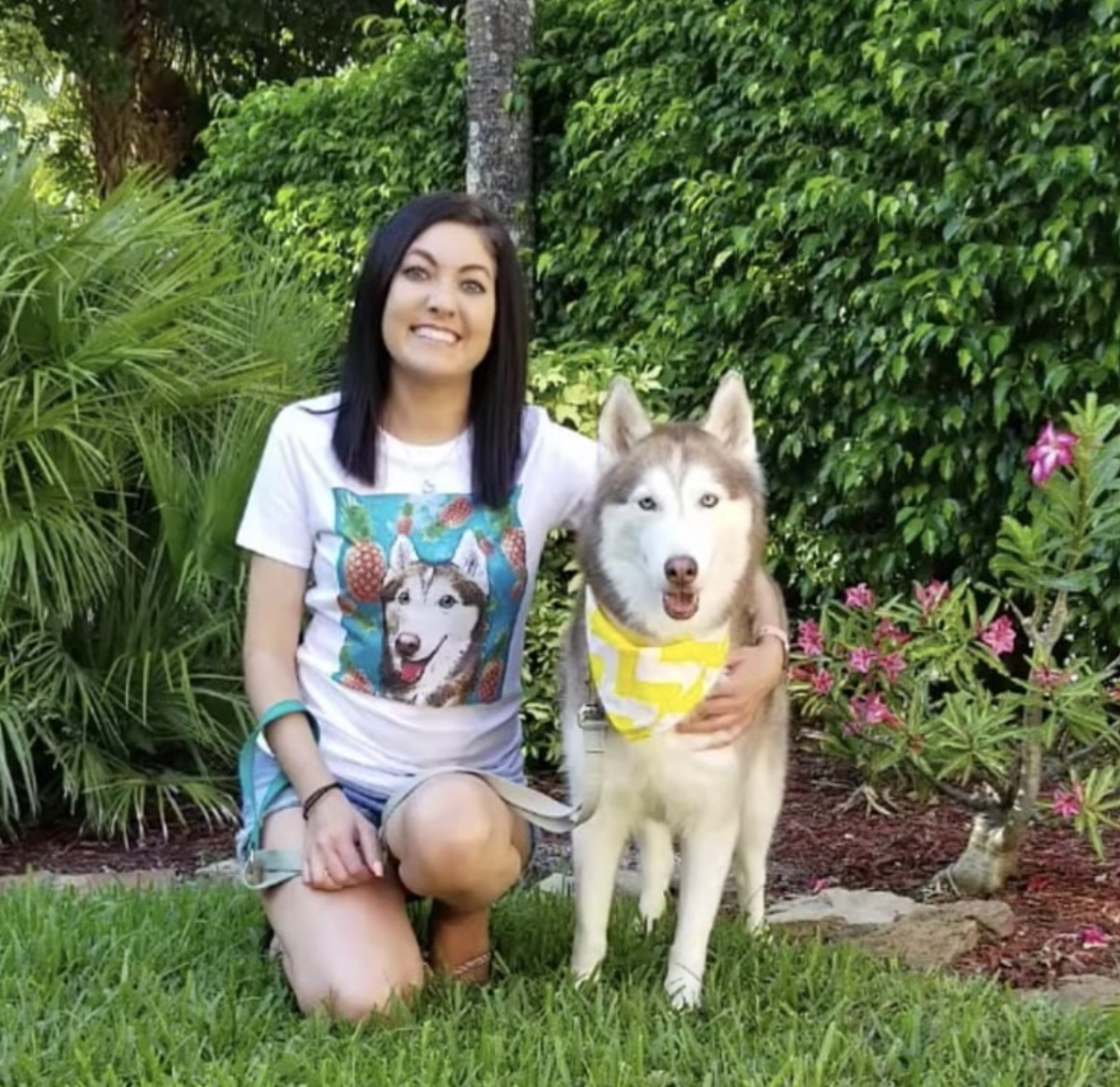Your pup told us to tell you you’re doing a great job! Reach over and give those toe beans a high five. In this 4th edition of our Puppy Survival Guide series for puppies aged 7–9 months, we continue to break down the most important info for their health and wellness, training, behavior, nutrition, safety, and physical development.
Cheat Sheet Checklist For 7–9 Month Old Puppies
This essential task checklist rounds up key points from the article below.
| Essential Task Checklist For Puppies 7–9 Months Old |
|---|
| ☐ Keep an eye out for females entering first heat cycle if they haven’t already. ☐ Avoid accidental pregnancies by keeping intact males and females separated during heat cycles. ☐ Talk to your vet about spay/neuter options. ☐ For large and giant breeds, talk to your vet about gastropexy surgery to avoid canine bloat. ☐ Have your pup microchipped. ☐ Continue tooth-brushing and nail trim routines. ☐ Give monthly flea/tick and heartworm preventatives. ☐ Continue to restrict exercise and rough play until bones are fully developed around 12–18 months. ☐ Be prepared for puppy testing boundaries during adolescence. ☐ Maintain structure and routine to help get over the hump of puppy adolescent phase. ☐ Be aware that puppy is still in phase of being easily spooked. Continue taking baby steps with new objects/situations, and reinforce with treats during this period. ☐ Keep practicing commands, and increase difficulty of training. ☐ Don’t hesitate to seek help from a trainer! ☐ Tell your puppy how cute they are every single day. Make sure they know. |
What Should You Already Be Doing Before Your Puppy Hits 7 Months?
If you missed the first three chapters in our Puppy Survival series, we suggest checking out Weeks 8–12, Months 3–4, and Months 5–6 to make sure you didn’t miss any important milestones. Don’t have time to dig into the details right now? No worries! We took notes for you. Here’s a quick recap of essential puppy tasks covered in previous articles that should be started or completed by the time your puppy hits 7 months old:
- Complete full series of puppy vaccines (DA2PP/DAP + rabies) and deworming treatment.
- Consider noncore vaccinations depending on lifestyle and location (i.e. bordatella vaccine).
- Puppy should have lost all baby teeth. Adult teeth should be fully erupted with molars possibly still coming in.
- Enroll in puppy socialization or training classes.
- Have a regular tooth-brushing and nail clipping routine.
- Decrease feedings to 2x/daily, and discuss weight goals with vet.
- Puppy should be socializing and meeting other dogs in controlled environment.
- Introduce puppy to at least 90 different different new, fun experiences (new people, places, things, and objects).
- Puppy-proof your home, yard, and vehicle—including buying a car seat or safety harness.
- Puppy should have a good grasp of potty training, crate training, and learning not to bite/be mouthy.
- Understand basic commands (sit, down, come, stay, etc.) and recognize their name.
- Working on manners (i.e. no biting, no jumping on people, no begging, walking nicely on leash).
- Giving monthly flea/tick/heartworm treatment.
- Watch for females having early first heat cycle around month 5, and take necessary precautions to avoid pregnancy.
- Discuss spay/neuter and microchipping with vet.
- Discuss gastropexy with vet for large and giant breeds.
- Avoid forced and strenuous exercise until bones are fully grown around 12–18 months.
- Reestablish boundaries and routines during stubborn puppy adolescent period.
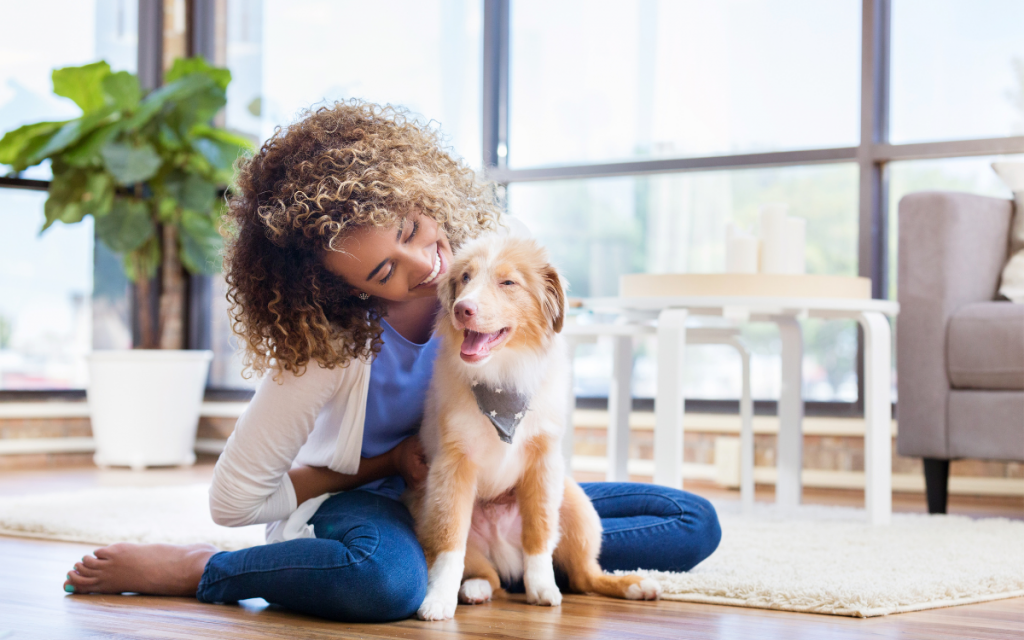

Physical Growth & Development
Prepare to take plenty of “blunder years” photos in the next few months! This is when your puppy is close to looking full-grown, but is bound to have a few quirky, awkward features they’re still growing into. (My, what big ears you have!)
Physical Appearance & Changes
Molars may still be coming in1—7 months
Females may start first heat cycle if they haven’t already2—7-9 months
Bones still growing and not completely hardened yet3—7-9 months
Puppy can usually hold bladder for 8 hours4—8 months
Some toy breeds and small breeds may reach full grown size3—8 months
Adult tooth enamel is thick enough for chewing firmer things4—9 months
Puppy Growth Chart3
| Dog Size | Weight | Rapid Growth Period | Timescale To Fully Grown | Total Lifespan |
|---|---|---|---|---|
| Toy (Extra Small) | Less than 8 lbs | Birth–11 weeks | 6–12 months | Approx 15+ years |
| Small | 9–22 lbs | Birth–4 weeks | 8–12 months | 14–16 years |
| Medium | 23–55 lbs | Birth–16 weeks | 8–18 months | 10–12 years |
| Large | 56–99 lbs | Birth–18 weeks | 11–18 months | 9–12 years |
| Giant | Over 100 lbs | Birth–20 weeks | 12–24 months | 7–9 years |
Growing Bones
At 7–9 months old, your puppy’s bones are still growing and are not completely hardened yet3. This means that forced exercise (like running or jumping) and rough play with older dogs can actually cause damage to their joints later in life3. Your vet can help you determine when your puppy is ready for more exercise.
- Restrict play to the yard or small areas.
- Keep walks short and leisurely. (Your pup isn’t ready to jog a 5k with you yet.)
- Consider a dog carrier backpack for hikes, so your dog can join you for easy stretches of trails.
- Supervise play with other dogs to avoid anything too rough or rigorous.
Puppy Puberty
There’s a good chance that your little pup has already reached sexual maturity around 5-6 months old. However, if you happen to have a big ol’ floof-osaurus rex—a.k.a large or giant breeds—they may reach sexually maturity a bit later than their peers.
For males, this is when they’re capable of impregnating a female. For females, this is when they’ll start their first heat cycle (a.k.a. doggie “period”), and when they’re technically capable of becoming pregnant. Keep in mind, pregnancy should absolutely be avoided at this stage. Their little bodies are still developing, which means it can be incredibly unsafe for them to carry puppies to term. Need a refresher on what to do once your female dog starts their first heat cycle? Click here!
What To Do Once Male And Female Puppies Hit Puberty
- Talk to your vet about spay/neuter.
- Know the less obvious symptoms of a female in heat (it’s not always visible).
- Keep females in heat away from males to avoid unwanted pregnancy (Avoid dog parks, day-camp etc.).
- Keep intact males away from females in heat. It goes both ways!
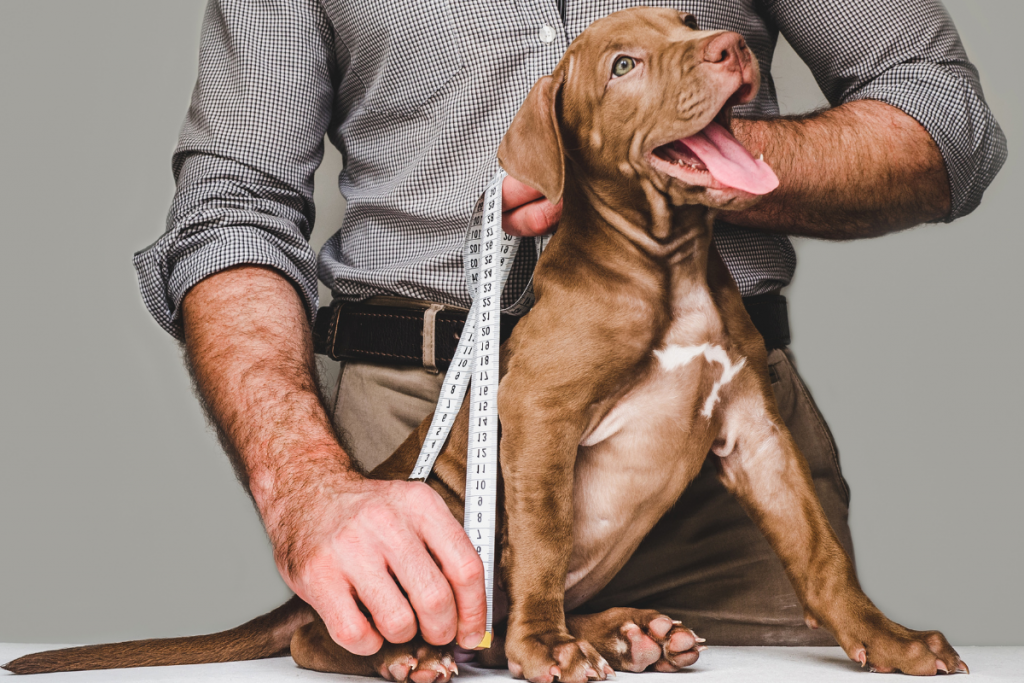

Behavior & Personality
At 7–9 months old, your pup is straddling puppy adolescence and a fear impact period at the same time. In other words, they’re simultaneously trying to bravely navigate growing independence, but also scared of nearly everything new. It’s a ping-pong of emotions!
Fear Impact Period Continues
From 6 months to 1 year old your puppy is in the middle of their “fear impact period,” where they’re easily spooked by new things4. Make sure to take baby steps with introductions to new objects/people/situations. Give lots of treats to reassure them during introductions.
Puppy Adolescence
The shenanigans continue! Depending on your puppy’s breed and size, puppy adolescence usually begins around month 6 and lasts until around 1 year old4. However, if your puppy is just beginning to enter this stage, put on your patience pants. Maybe download a meditation app on your phone, for good measure. Prepare for your puppy to start testing boundaries and your patience.
It’s important to realize that they aren’t intentionally disrespecting you during this stage! These behaviors come from a combination of changing hormones, growing confidence, and the instinct to become independent. It’s important to constantly remind yourself that it is just a phase and it will pass!
What Should I Expect During Puppy Adolescence?
- Puppy begins gaining confidence and exploring on their own—often where they shouldn’t.
- Raging puppy hormones and teenage attitude.
- Seeking more independence.
- Pushing boundaries (breaking rules).
- Ignoring commands they already know.
How Do I Deal With My Adolescent Puppy Pushing Boundaries?
It’s your job to help them learn how to develop independence while still following house rules.
Stay Calm: Do not yell. Do not reflexively punish. When you yell, your puppy’s brain is going to focus more on your scary, angry emotion than the lesson you’re trying to teach. That’s the recipe for fearful, skittish, and emotionally damaged adult dogs who fear humans. Instead, stay calm. Take a break. Take a moment away.
Go Back To Basics: Reinforce structure and routine by focusing on basic commands, positive reinforcement, and treats for good behavior. Most importantly, don’t let them ignore you. For instance, if they’re being stubborn about listening to commands, remind them how to complete the command, make sure they actually complete it (even if it’s less graceful than usual), and give them a treat before moving on.
Stay Consistent: Don’t let them ignore you. Be predictable and stick to your guns, but be gentle and understanding. This is just a phase of learning.
Talk To A Trainer: Puppies can be difficult. Trainers are there to help! They can give you the confidence and guidance to help you raise a stubborn pup before you reach your wit’s end. Reaching out to a trainer can help you turn things around and avoid tragic rehoming and surrendering situations.
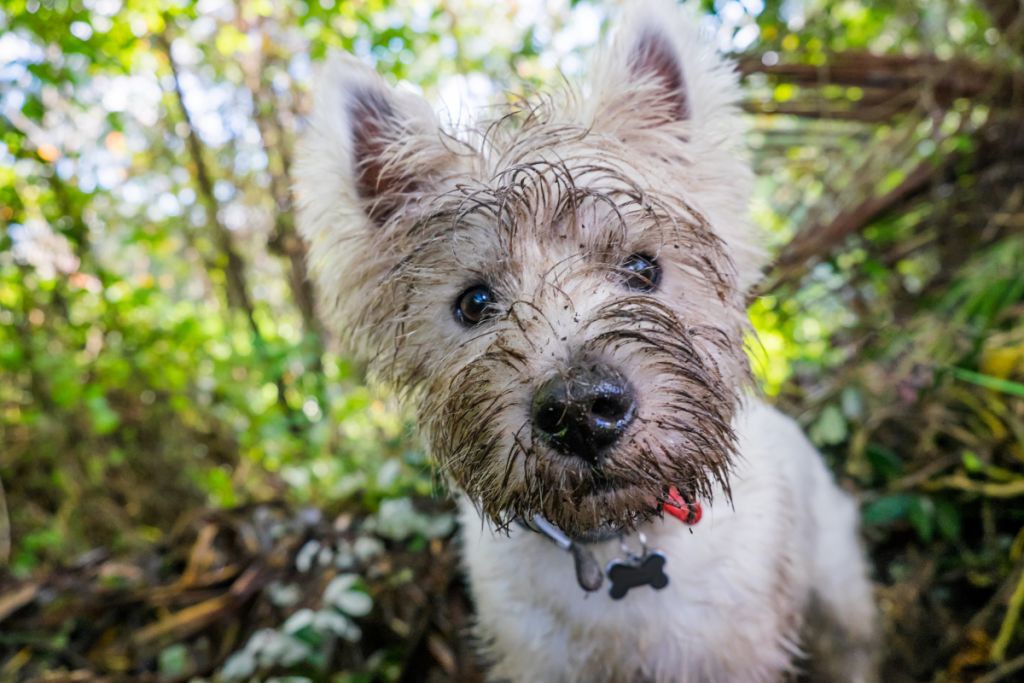

Health & Wellness
Your puppy should be fully vaccinated, dewormed, and on routine flea/tick and heartwork prevention. If you haven’t done so already, now is the perfect time to talk to your vet about:
- Spay/neuter options and timing.
- Gastropexy surgery for large and giant breed dogs.
- Microchipping.
Spay/Neuter
Generally, dogs should be spayed no earlier than 6 months old because their bodies are still developing4. If your vet has suggested holding off for a few more months, they can help you decide on the best time to schedule your pup for spay/neuter.
Spaying or neutering your pup is a responsible choice to help control the serious problem of pet overpopulation. Over 3 million dogs enter U.S. shelters each year, which leads to overcrowding. Sadly, many of these dogs will end up euthanized for no reason other than to create additional space.
Related: Spaying Or Neutering Your Dog: Benefits, Risks, & More
Gastric Dilatation-Volvulus (GDV) & Gastropexy
GDV (a.k.a. canine bloat) is mostly an issue with large and giant breed dogs4. This is a life-threatening condition where a dog’s stomach becomes overstretched and can twist due to excess air and pressure build-up from gas. This condition is deadly if not corrected with emergency surgery4.
A gastropexy is a preventative surgery and life-long solution to avoid GDV. If you have a large or giant breed prone to this condition your vet may recommend this surgery at the same time your puppy is being spayed/neutered.
Microchipping
Microchips contain ID information about your dog, including their name, address, and human’s phone number. Newer ones even work as a thermometer, allowing the vet to simply scan your dog at vet visits instead of sticking a thermometer up their bum! Microchipping can be done at any time, but some parents prefer to have their pup microchipped while they’re being spayed/neutered.
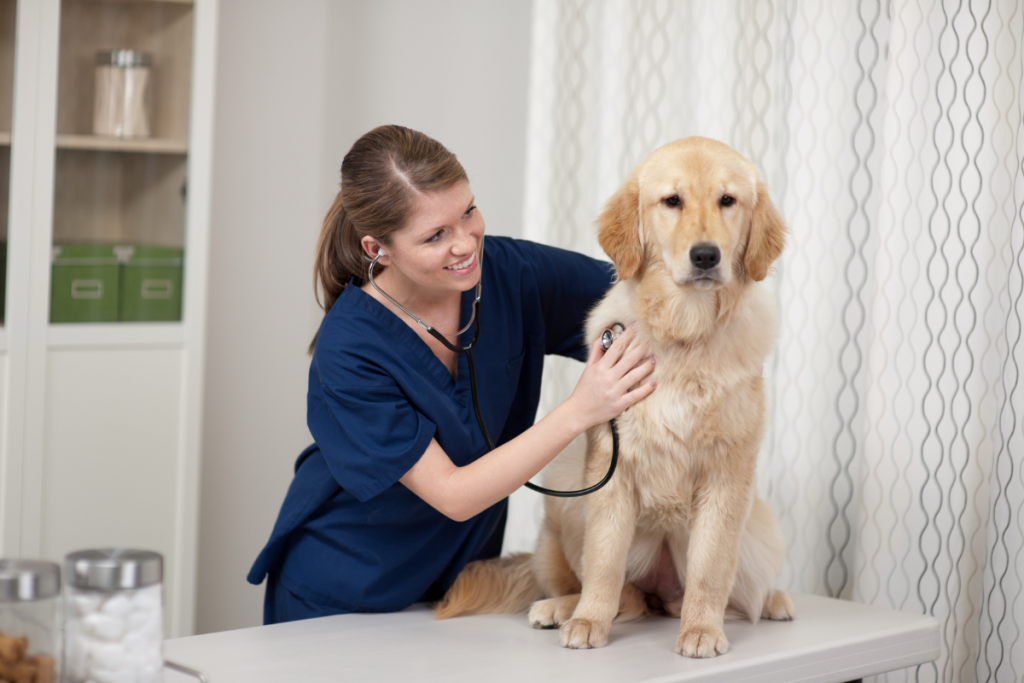

Nutrition & Exercise
You’ve got a growing pup on your hands! It’s important to make sure their diet and exercise is age-appropriate. Here’s what to expect during months 7–9:
| 7 Months Old | 8 Months Old | 9 Months Old | |
|---|---|---|---|
| Eat | Feed 2x daily | Feed 2x daily | Feed 2x daily |
| Sleep | 13–18 hours per day | 12–17 hours per day | 11–16 hours per day |
| Potty | 3–4 potty breaks per day | 3–4 potty breaks per day | 3–4 potty breaks per day |
| Play | ~35 minutes of leisurely exercise | ~40 minutes of leisurely exercise | ~45 minutes of leisurely exercise |
Always do you own research when picking the perfect food for your pup, but if you need a place to start, try BARK Food for puppies! Subscribe & save 10%!
Ideal Weight
Your puppy should now have a distinguished waistline to help you judge their ideal weight. You’re aiming for the “hourglass” figure with a narrow waist. If you’re unsure if your pup is too thin, too chonky, or just right, your vet can help you assess their proper weight.
Restricted Play & Exercise
While your puppy’s bones are still growing, it’s important to avoid any forced exercise (i.e. running, jumping off furniture, rough play) until they’re 12–18 months old, depending on their breed size4. At 7–9 months old, you’ll still want to restrict play to the yard and going for leisurely walks on a leash.
The common rule of thumb is to add 5 minutes of exercise each month as your puppy grows—for instance, at 7 months your puppy could exercise for 35 minutes, 40 minutes at 8 months, and so on3. However, exercise requirements and limitations differ according to breed, so never hesitate to ask your vet for clarification.
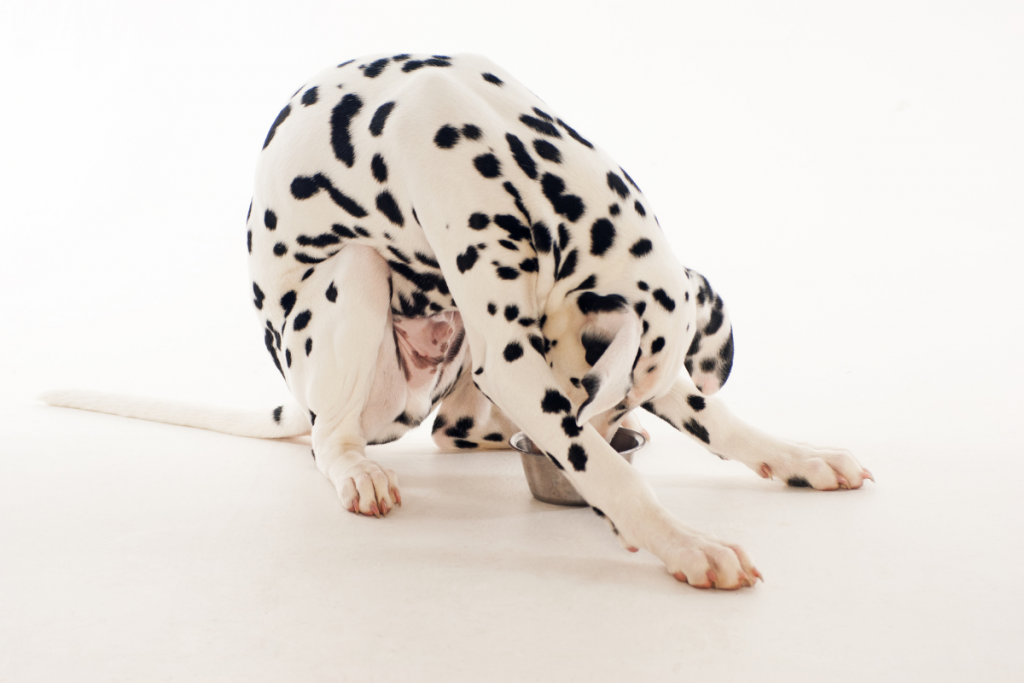

Training
All those grueling months of hard work and training should finally be paying off! You see the light at the end of the tunnel! At this age your pup should know all their basic commands, recognize their name, and have a firm grasp on their potty training, crate training, and social manners. Now’s the time to stay consistent and keep practicing commands and training.
Basic Commands Your Puppy Should Know
- Sit
- (Lie) Down
- Stay
- Come
- Leave it/drop it
- Heel
- “Okay” or another release command
- Shake, roll over, or a few fun trick commands
Training Next Steps
Keep Practicing—Once your puppy knows their basic commands, the work doesn’t stop there. The more you practice commands, the more consistent your dog will be at completing tasks into adulthood (and the more you’ll get those “wow! Your dog is so well-behaved!” compliments from strangers).
Maintain Structure—Your puppy should be well on their way to being completely potty trained, crate trained, and well-socialized. Maintaining a daily routine and structure with these tasks will help your puppy catch on to this type of training faster. More importantly at this age, it will help them avoid training regression during puppy adolescence.
Increase Difficulty—Start increasing the difficulty of commands using the 3 Ds: distance, duration, and distraction. Increase distance between you and your puppy when using commands like “come” and “stay.” Increase duration of commands like “drop it” or “stay” by making your puppy wait longer. Increase distractions by practicing commands in public.
Get Creative—Get creative and teach your pup interesting tricks—like how to fetch you a White Claw from the fridge, or how to put away their own toys. Just be cautious with the tricks you choose. For instance, don’t teach your dog to open cupboards or drawers if you keep medications or other harmful items around the house that your dog could find.
Have Realistic Expectations—No matter how well-trained your dog is, they have limits. Don’t go out partying with your friends for 10 hours and act shocked when you come home to a mess. Could you go 10 hours without a bathroom break? Doubtful. Your dog doesn’t have a magical butthole that can hold it forever either. Be realistic.
Expect Mistakes—Even the most well-behaved dogs will have accidents and make mistakes throughout their life. Know when to cut them some slack, and know how to recognize when something is out of the ordinary. If your fully-potty-trained dog suddenly starts having accidents, ask yourself what else might be going on. They may be experiencing a medical issue, or they may be acting out due to lack of exercise or attention.
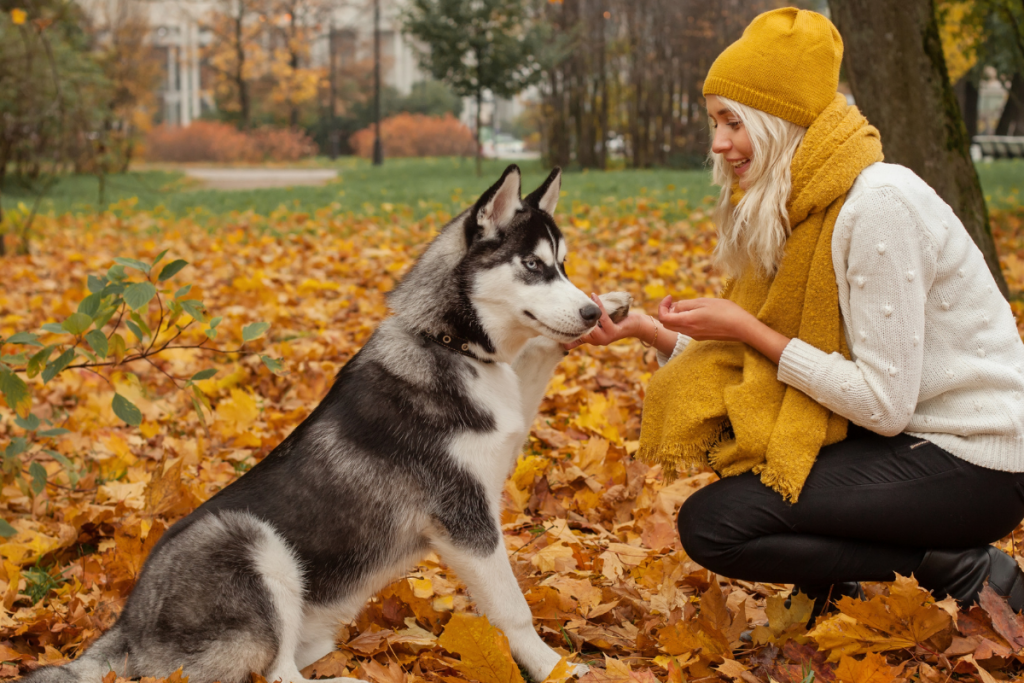

Puppy Safety
Puppies diabolically seem to create hazards out of thin air. Keep them safe by staying one step ahead.
Avoid Leaving Your Dog Alone In The Yard—There are multiple reasons for this. They could accidentally munch on toxic plants or get into gardening supplies. They could jump a fence, or fall in a pool without you noticing. Worst of all, evil humans exist. Every year there are heartbreaking stories of strangers or neighbors poisoning, stealing, or even shooting dogs in their own yard. Be there to protect them.
Always Keep An Eye On Your Dog At Parks And When Playing—Although we don’t suggest letting your puppy loose at a dog park just yet while their bones are still growing, we know some pet parents still might. So, for those who do, keep an eye on your dog at all times. This way you can take steps to avoid aggressive dogs, or recognize when it’s time to leave if the park is too chaotic. Plus, keeping a watchful eye will help prevent your puppy from being shamed as “the pooper” by other pet parents when you miss a deuce drop.
Avoid Letting Your Dog Eat Random Stuff During Walks—Dogs have a habit of grabbing for mystery “bush-bagels,” dead animals, and pretty much anything disgusting. You never know what dangerous or toxic things are lying on your walking route. Pay attention to what they’re sniffing, and use your “drop it” or “leave it” command when needed.
Locate A Nearby 24/7 Vet In Case Of Emergency—You can never predict when an emergency will happen. Plan ahead by knowing where your closest 24/7 emergency vet office is located. Keep the phone number and address in your cell.
Recap Of Past Puppy Safety Tips
- Keep Their Collar On In The House: Especially important during thunderstorms, fireworks, or with guests visiting. If they run outside, they need their ID.
- Take Their Collar Off When Leaving Them In A Crate Alone: Collars and ID tags can get tangled or stuck on crate bars.
- Don’t Leave Toys Or Chews In Your Pup’s Crate When They’re Alone: They become a choking hazard.
- Never Allow A Puppy To Roam Free In A Vehicle: They will become a projectile in an accident.
- Use A Car Seat Or Dog Seatbelt: Never attach a seatbelt directly to a collar, as it can cause strangulation. Only attach to a secure harness.
- Never Let A Dog Ride In The Bed Of A Truck: Even when attached with a leash, dogs may jump to chase an animal or get thrown during an accident. It’s just not worth it.
- Don’t Let Your Dog Hang Half Their Body Out Of A Window: Yes, it looks cute, but if they can fit their front feet out the window then they can jump out to chase something or fall.
- Close Doors Behind You: Puppies sneak out at the slightest opportunity.
- Microchip Your Puppy
- Consider A GPS Collar
- Use A Dog Life Vest: Even strong swimmers can drown in lakes and oceans in rough conditions or if they fall off a boat.
- Use Reflective Or Light-Up Gear At Night
- Consider A Puppy Nanny Cam: Keep an eye on your puppy while you’re out of the house.
Puppy Products To Consider
Need an essential product refresher? Check here!
Additional Products/Memberships For Your 7-9 Month Old Puppy
- Doggie diapers for females in heat (prior to spay)
- Puppy gate/baby gate
- Anxiety vest
- Sweaters for short-coat breeds, like Chihuahuas, who get cold easily
- Dog carrier backpack
- Snow or rain boots to protect from road salt or rough terrain
- Pet insurance
- Microchip
- GPS collar or GPS tag
- Puppy life vest
- Reflective gear or LED lights for night walks
- Puppy training classes
- Training treats
- You can never have too many toys!
- Don’t let your dog become part of the 80% with dental disease by age 3. Take care of their teeth with an easy toothbrush-less dental kit.
Emergency Resources
ASPCA Animal Poison Control
If your puppy eats something they shouldn’t, call the animal control poison center at (888) 426-4435.
Emergency Vets
If your puppy has an emergency when their regular vet is closed, you may need to find a 24/7 emergency vet near you. Emergency Vets USA enables you to search for an emergency vet by state or call (855)-778-6815.
Lost Pet
National hotline for reporting lost pets 1 (800) 486-2631.
Dog CPR How-To
Dog CPR Quick Guide
Dog CPR Training Video
Choking Dog/Dog Heimlich Maneuver
Dog Heimlich Maneuver Training Video
Sources
1Hale, Fraser A. “Juvenile Veterinary Dentistry.” Veterinary Clinics of North America: Small Animal Practice , 2005, https://www.vetsmall.theclinics.com/article/S0195-5616(05)00023-9/fulltext.
2“When Should I Spay or Neuter My Pet?” AAHA (American Animal Hospital Association), https://www.aaha.org/your-pet/pet-owner-education/ask-aaha/spay-or-neuter/.
3Lewis, Georgia. “Musculoskeletal Development of the Puppy Birth to Twelve Months.” Research Gate, Hartpury University: Animal Therapy Magazine: Issue 15, 2019, https://www.researchgate.net/profile/Georgia-Lewis/publication/333118590_Musculoskeletal_Development_of_the_Puppy_Birth_to_Twelve_Months/links/5cdc8200299bf14d959c443d/Musculoskeletal-Development-of-the-Puppy-Birth-to-Twelve-Months.pdf.
4Hennet, Margo. “Puppy Survival Guide.” 2 Mar. 2022
Youngerman, Claire. “House-Training Your Puppy.” Animal Health Topics , UC Davis | School of Veterinary Medicine, 24 Nov. 2021, https://healthtopics.vetmed.ucdavis.edu/health-topics/canine/house-training-your-puppy.

